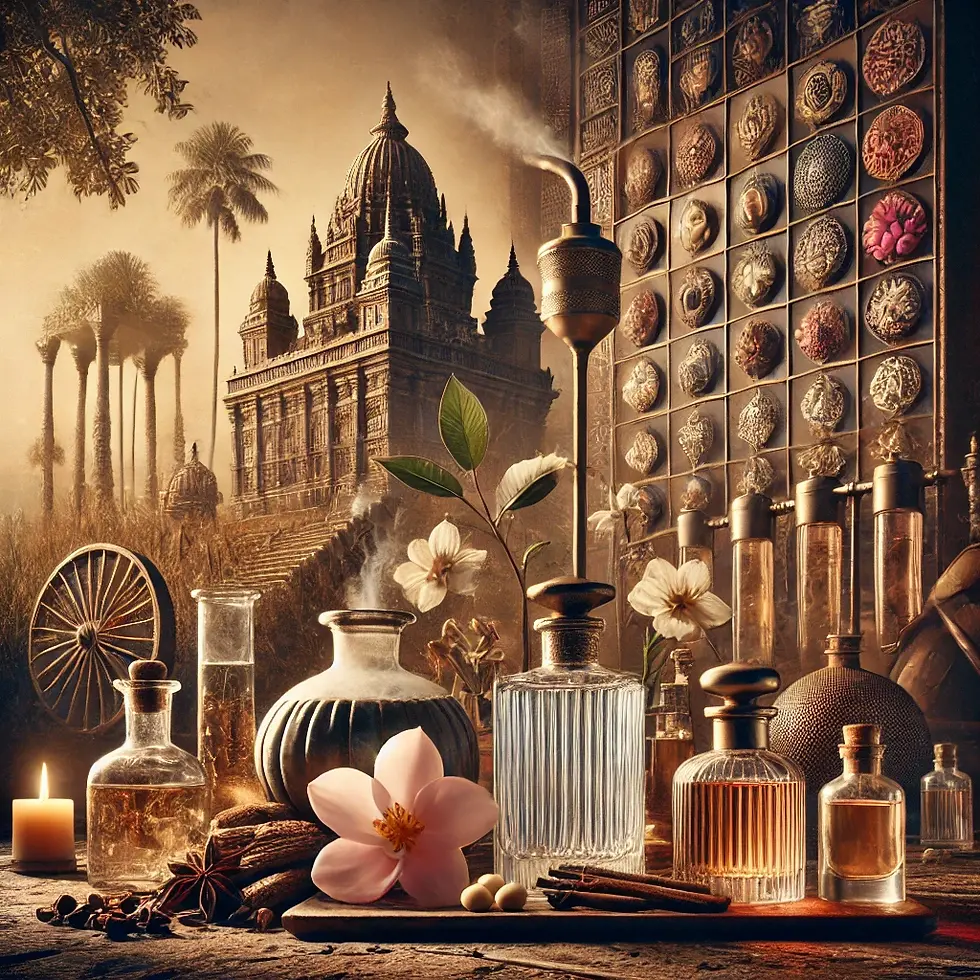
From Ancient Rituals to Today’s Fragrances: How India’s Perfume Heritage Influences Modern Scents
- Udayan Monga
- Oct 9, 2024
- 2 min read
Perfumes have been an essential part of Indian culture for over 5,000 years, going all the way back to the ancient Indus Valley Civilization. Back then, fragrances were much more than just a luxury item; they were woven into spiritual and everyday life. Natural ingredients like sandalwood, jasmine, and vetiver were used in rituals and offerings to purify the air and create a divine connection. These same natural scents, treasured for centuries, are still featured in many of today’s perfumes, offering a blend of tradition and modernity.
The techniques for extracting these fragrances have evolved but remain rooted in the ancient Indian method of steam distillation, a process perfected thousands of years ago. Today, many luxury and niche perfume brands still rely on these time-honored techniques. The quality and purity of essential oils extracted through these methods continue to be unmatched, making them a core component in modern perfumery.

If you’re someone who appreciates authenticity in the products you use, knowing that the fragrances you wear are linked to ancient Indian traditions is an experience in itself. There’s something special about wearing a perfume crafted using techniques passed down through generations, blending history and innovation. It’s a reminder that the scents we enjoy today have been part of India’s heritage for centuries.
By choosing perfumes that draw on India’s rich history, you are not just wearing a fragrance but also connecting with an ancient culture that continues to inspire the modern world. From the ingredients to the methods used, India’s perfume heritage is alive and well in every spritz of a modern scent, making it a timeless experience.


